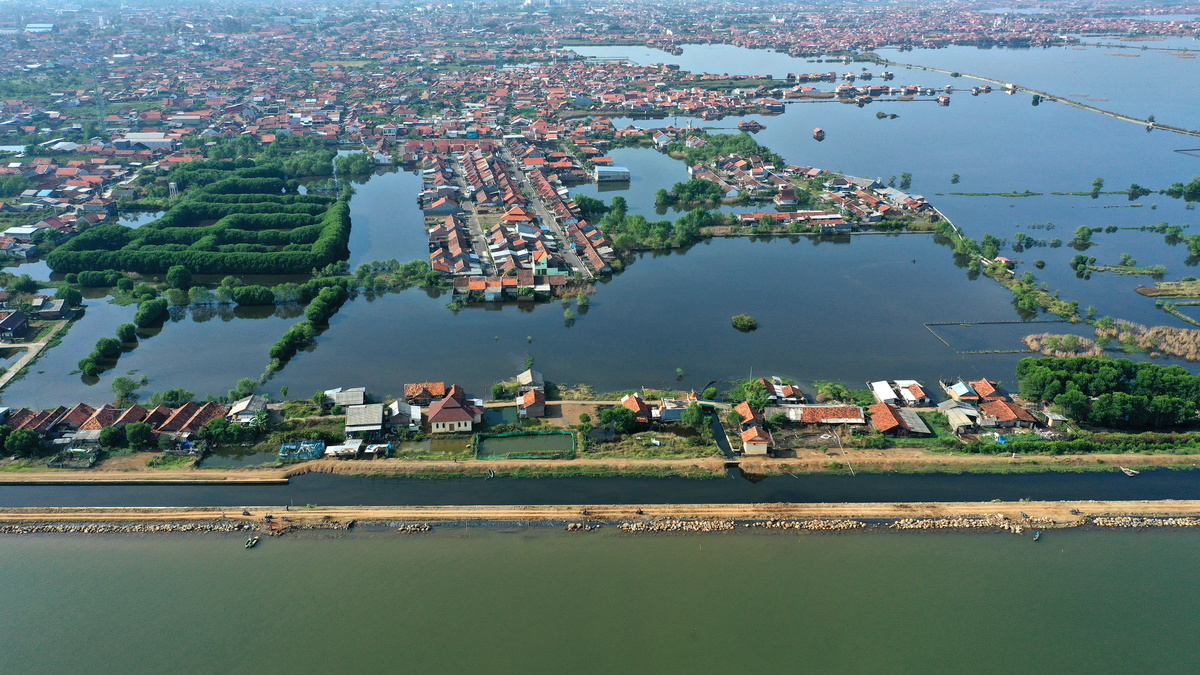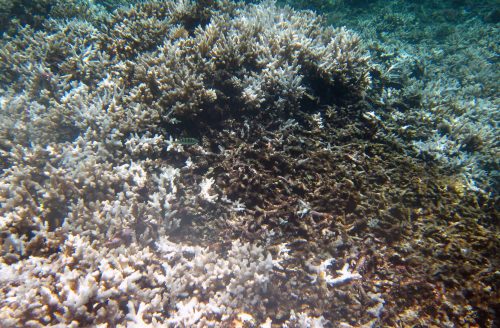The Impact of Rising Average Earth Temperature and the Threats to Coastal Areas

Photo Credit : Agus Susanto/Kompas
In recent decades, climate change and global warming have become major concerns around the world. One of the most obvious signs of this change is an increase in the average temperature of the earth. According to an ongoing temperature analysis led by scientists at NASA's Goddard Institute for Space Studies, the global average temperature on Earth has risen by at least 1.1° Celsius (1.9° Fahrenheit) since 1880. The majority of warming has occurred since 1975, at a rate of about 0.15 to 0.20°C per decade. In this article, we will explore the relationship between rising temperatures and global warming, as well as its impact on coastal areas. Climate change threatens coastal areas, which are already stressed by human activity, pollution, invasive species, and storms. Sea level rise can erode and submerge coastal ecosystems and eliminate wetlands. Warmer, more acidic seas can disrupt coastal and marine ecosystems.
Average Increase in Earth's Temperature and Global Warming
Global warming is the phenomenon of an increase in the average temperature of the Earth's atmosphere due to increased emissions of greenhouse gases, such as carbon dioxide (CO2) and methane (CH4), released into the atmosphere by various human activities, including the burning of fossil fuels, deforestation, and industrial pollution. High concentrations of greenhouse gases cause heat retention in the atmosphere, resulting in a rise in temperature at the Earth's surface.
According to the Intergovernmental Panel on Climate Change (IPCC) report, global average temperatures have risen by about 1 degree Celsius (1°C) compared to the pre-industrial era. If this trend continues, best estimates suggest that global temperatures could rise by more than 1.5°C in the second half of the century.
- Impact on Coastal Areas
Temperature rises beyond the 1.5°C limit will have serious consequences for coastal areas around the world. Here are some examples of possible impacts:
Rising Sea Levels
Rising global temperatures contribute to the melting of polar ice caps and glaciers, leading to an increase in the volume of seawater. Coastal areas will face a higher risk of flooding, more severe coastal erosion, and seawater intrusion into groundwater systems, threatening coastal ecosystems and human infrastructure.
Impact of Sea Level Rise in Indonesia
There are several examples of the impact of sea level rise in Indonesia. Indonesia's National Research and Innovation Agency estimates that at least 115 islands in the country, including Bali and Nias as well as islands along the coast of West Sumatra, will be submerged by 2100. The main cause is a combination of sea level rise and land subsidence.

Photo Credit : Safirmakki/cnnindonesia
Researchers from BRIN emphasize that climate change, exacerbated by land subsidence in various regions, is the main cause of this problem. He pointed to Jakarta and Pantura as areas that were greatly affected because of their soft soil conditions and being in the bay area. According to BRIN, the northern coastline of Java island is very vulnerable to decline. Therefore, a combination of appropriate mitigation and adaptation is needed to deal with this environmental threat.
In a seminar, Researcher from BRIN presented the results of a simulation of sea level rise and its impact on Jakarta. The results show that about 160.4 square kilometers (24.3 percent) of Jakarta is expected to be submerged by 2050.
- Mangrove Ecosystem Damage
Mangroves are important coastal ecosystems, serving as wave breaks, carbon stores, and living places for many species. A significant increase in temperature can cause the death of mangrove forests, threatening the sustainability of ecosystems and biodiversity in estuarine / coastal areas.
Example of Occurrence:
The Mahakam River Delta in East Kalimantan, Indonesia, has suffered significant damage to mangrove ecosystems due to rising temperatures and climate change. Coral bleaching and mass mortality of mangroves have occurred, threatening the animal and plant life that depend on those ecosystems.
- Disruption to Coral Reef Ecosystems
Higher ocean temperatures increase the risk of coral bleaching, where corals lose their symbiotic algae and turn white. Repeated coral bleaching can lead to mass coral die-offs, destroy important coral reef ecosystems and threaten marine biodiversity.
Impact to Coral Reef in Indonesia

Photo Credit : Fatur Rakhman/Mongabay Indonesia
Gili Matra, West Nusa Tenggara : The coral ecosystems on Gili Matra (Gili Meno, Gili Air, and Gili Trawangan) are almost extinct. Data from the Indonesian Ministry of Marine Affairs and Fisheries in 2022 states that only about 247 hectares or about 10% of the total coral ecosystem area on the Gilis survive. Rising ocean temperatures are the main reason behind this damage. The area has experienced several extreme events over the past 15 years, resulting in mass coral bleaching.
Conclusion
The increase in the average temperature of the Earth associated with global warming has a significant impact on coastal areas. Rising sea levels, damage to mangrove ecosystems, and disruption to coral reef ecosystems are clear examples of such impacts. In the face of these challenges, it is important for the global community to take responsive action on climate change. Efforts to reduce greenhouse gas emissions, preserve and restore coastal ecosystems, and increase coastal resilience are key to protecting coastal areas from worse impacts in the future.

